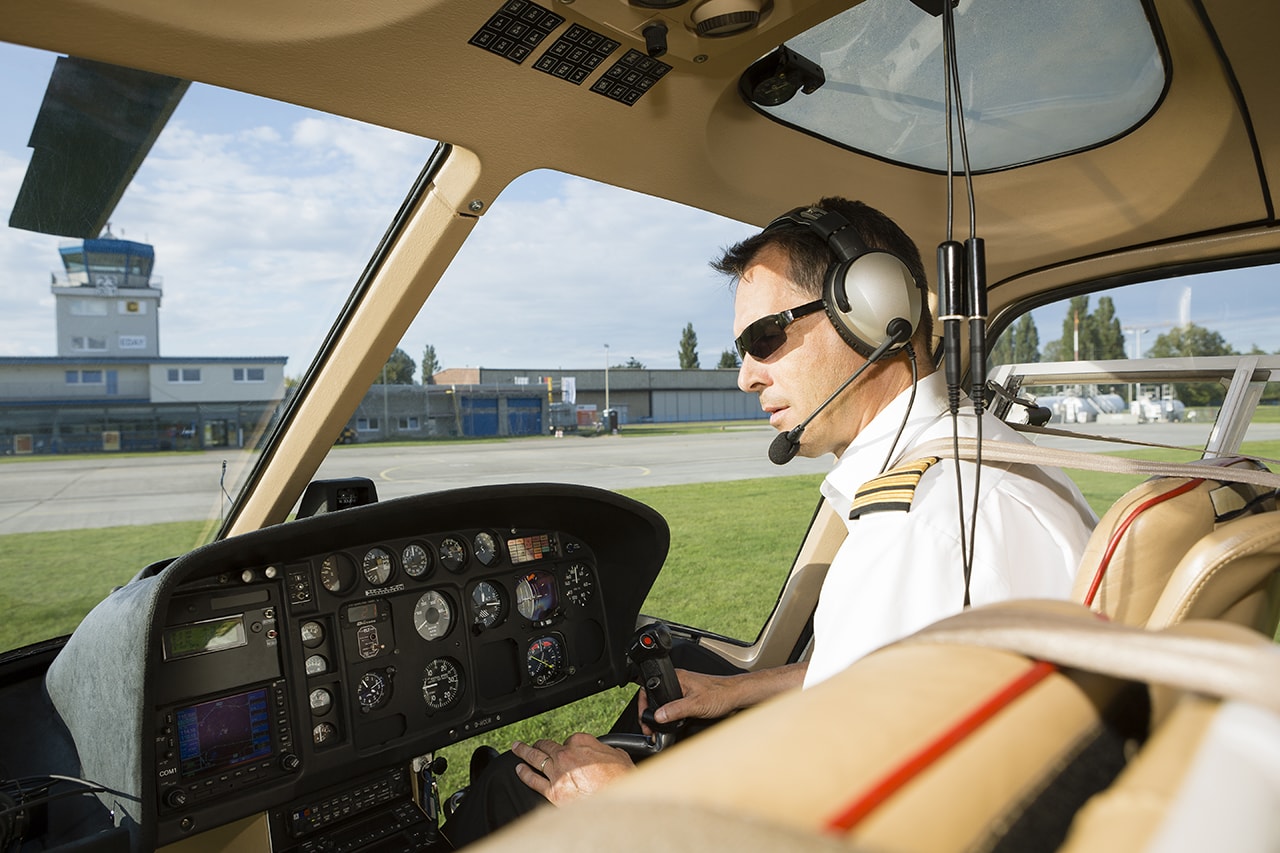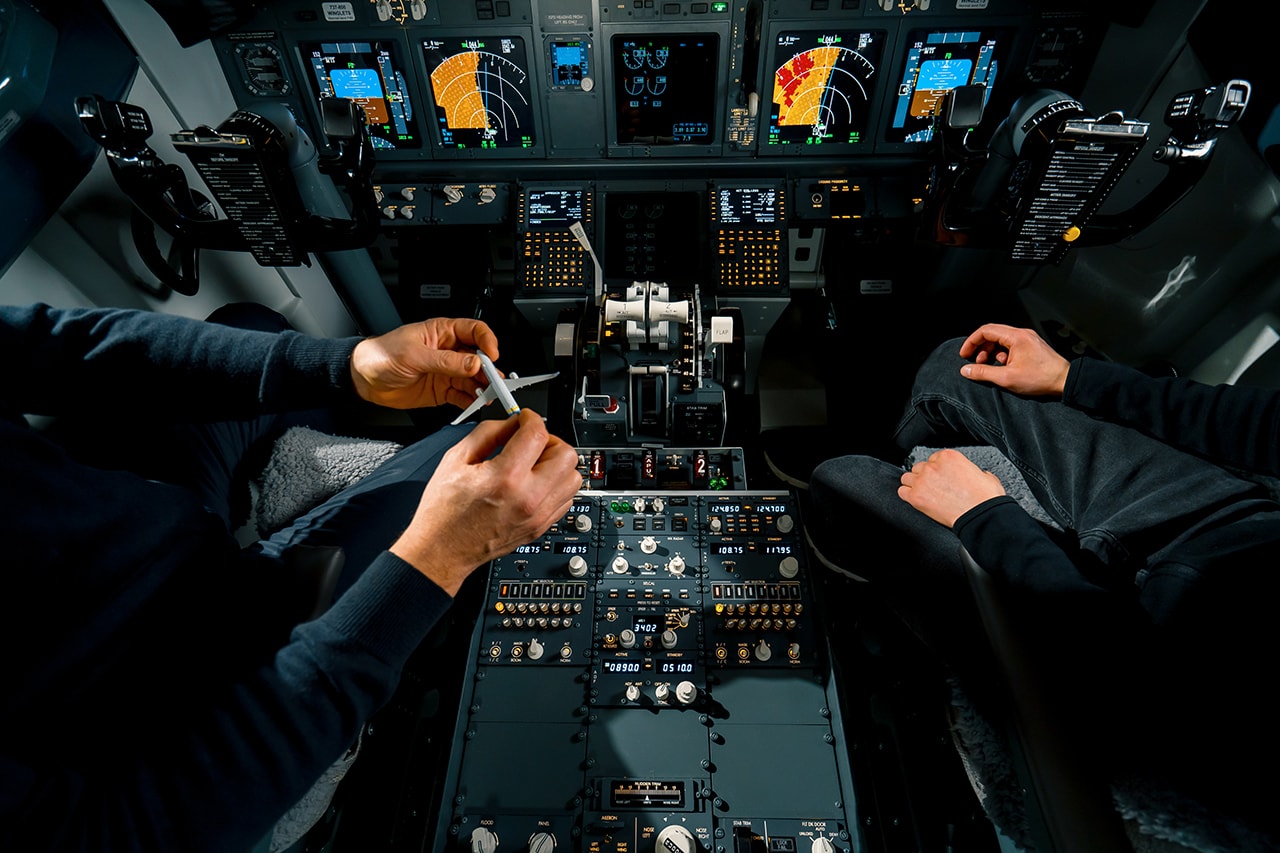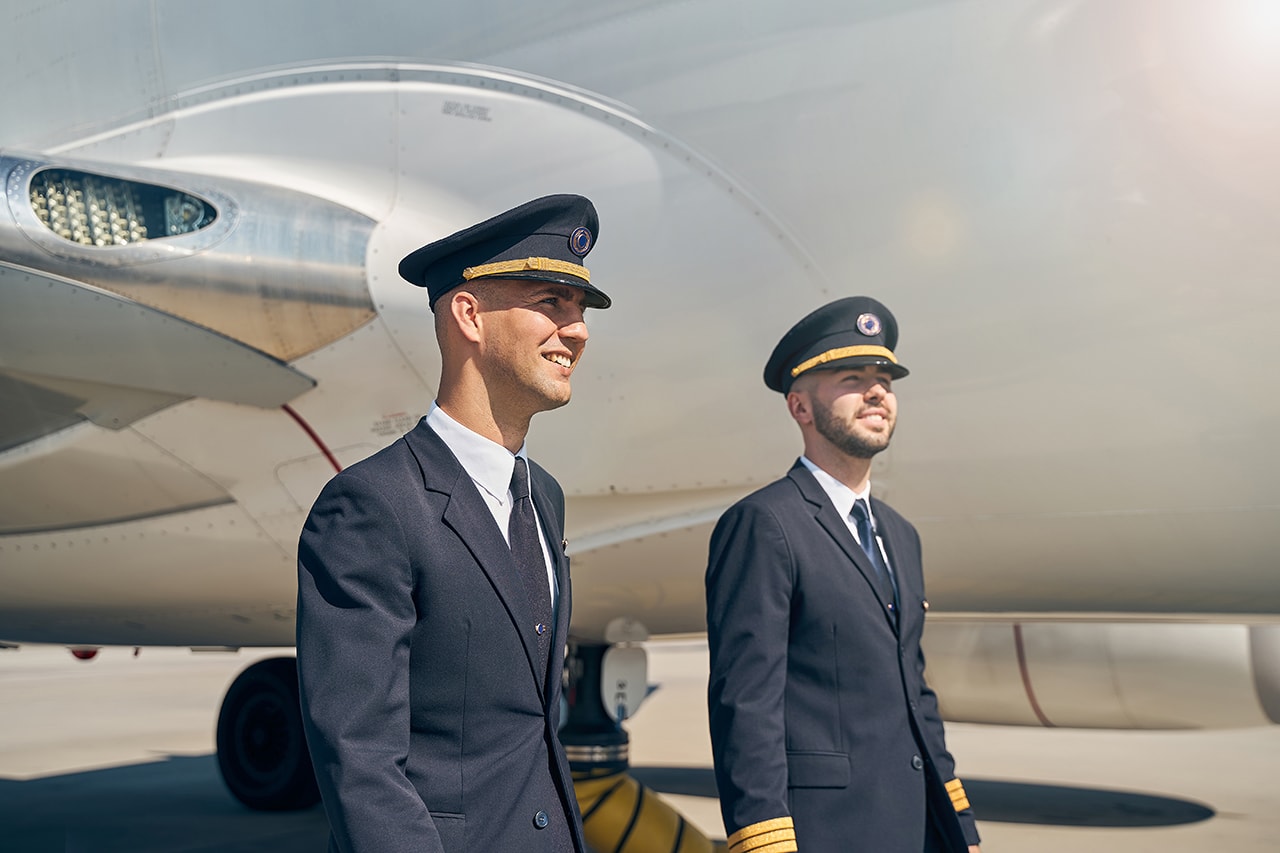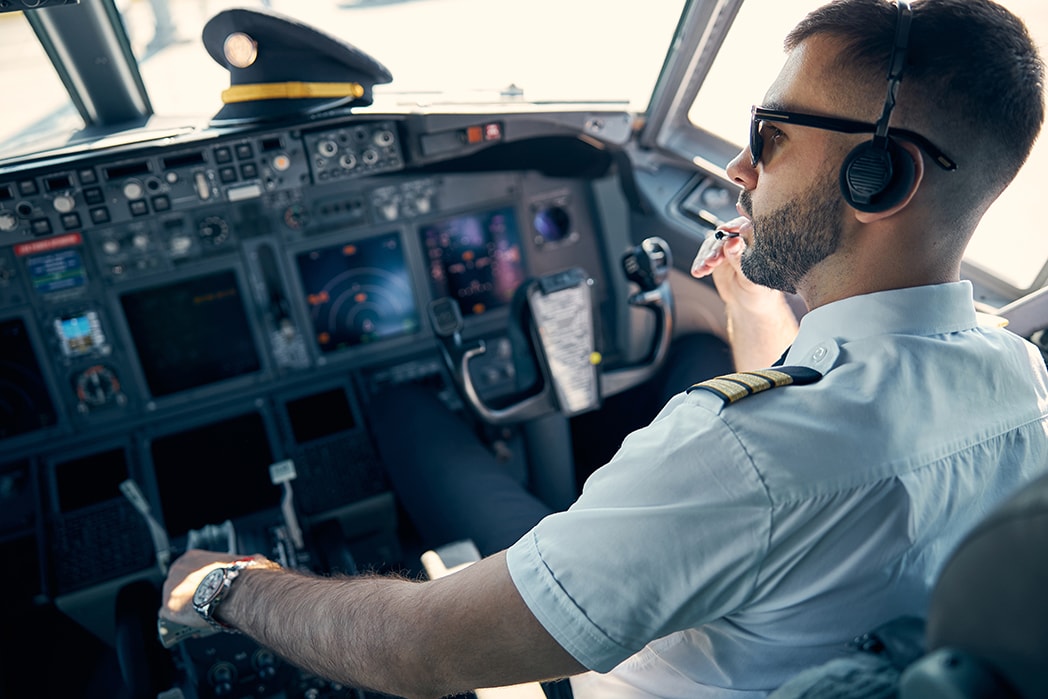Essential Requirements for Commercial Pilot License
Jul 01, 2025
Interested in how to become a pilot and pursue a commercial aviation career? You’ll need to meet several Requirements for Commercial Pilot License.
This article covers the essential qualifications, including age, medical certification, flight hours, and exams. Start by understanding these basics to navigate your path toward a commercial pilot career.
Key Takeaways
-
To get a Commercial Pilot License you must meet the basic requirements be at least 18 years old, speak English and have a valid FAA medical.
-
Aspiring pilots need to log 250 hours of training, including specific hours of flight time such as cross-country and night flight training, ground school, and pass a written exam to show you know the theory.
-
Continuing education and training, recurrent training and medical checks are required to keep your Commercial Pilot License current and up to date with regulations and aviation technology.
Basic Eligibility Criteria for a Commercial Pilot License
To become a commercial pilot you must meet the basic requirements. The Federal Aviation Administration (FAA) requires you to be at least 18 years old to get a commercial pilot certificate.
You must also be able to read, speak, write and understand English since communication is key to safety and efficiency in aviation.
Another requirement is to hold a Private Pilot Certificate (PPL) and private pilot license. This shows you have the foundation skills and knowledge to move on to more advanced training.
You must also have a valid FAA medical certificate to prove you are fit to fly. There are different types of medical certificates but for a commercial pilot license you need at least a second-class medical certificate.
A college degree is not required to become a commercial pilot, but it can be beneficial for certain career paths, such as major airlines or management positions. Some flight training programs even offer credit transfer options toward a college degree.
These basic requirements are the first step to becoming a student pilot and a professional pilot so you can move on to more intense flight training and aeronautical experience.
Understanding the requirements pilot license early on helps streamline your journey and avoid delays in the certification process.
Before starting any flight training, you’ll also need to obtain a student pilot certificate, which legally authorizes you to fly under the supervision of an instructor.
Aeronautical Experience Requirements
Getting a commercial pilot license requires both knowledge and experience. The commercial pilot requirements are:
-
250 hours of flight time to get a commercial pilot certificate.
-
190 hours if in an FAA-approved Part 141 program. Completing an approved commercial pilot course at a training center certificated by the FAA can allow you to credit additional hours toward your aeronautical experience requirements as an approved commercial pilot.
-
100 hours as pilot-in-command.
-
50 of those hours as pilot-in-command in an airplane.
Cross-country flights are a big part of your training, which requires a flight involving a straight line distance of more than 100 nautical miles from the original departure point.
The required cross-country flight must cover a straight line distance of at least 300 nautical miles from the original departure point, with landings involving at least three different airports.
The total straight-line distance for required cross-country flights must meet FAA minimums, and some flights must be conducted at airports with an operating control tower.
A longer cross-country flight of at least 300 nautical miles with landings at three different points is also required.
These flights give you experience in navigation and flight planning in different conditions, including an hour cross country flight and tracking navigational systems, and navigational systems.
Night flight training is also a big part of your training, which requires at least 5 hours of solo flight time, including one cross-country flight of more than 100 nautical miles and 10 takeoffs and landings.
Night training must include landings involving different airports and may require operations at airports with an operating control tower.
These experiences will prepare you to handle night flying and overall aeronautical skills, especially solo flights and solo training. A flight training device can be used to log certain hours toward the total required hours.
Training can be conducted in various types of aircraft, such as a complex airplane, turbine powered airplane, and technically advanced airplane, and experience in these aircraft is required for certain ratings.
Instrument training, including attitude instrument flying and partial panel skills, is a required part of the curriculum for commercial pilot applicants.
Specific ratings, such as helicopter rating, powered lift rating, and lighter than air category, have their own unique flight involving and training requirements.
Commercial pilot applicants are held to higher standards than private pilots, especially in terms of aeronautical experience and practical test requirements.
Ground School and Written Exam

Ground school is the foundation of your theoretical knowledge as a commercial pilot. This takes about 6 weeks and covers a lot of topics including aerodynamics, meteorology and the principles of safe aircraft operation.
You need to understand these subjects to make informed decisions during flight.
The commercial pilot knowledge test will test your understanding of:
-
Federal Aviation Regulations
-
Accident reporting
-
Basic aerodynamics
-
Meteorology
-
Performance charts
-
Weight and balance
-
Air navigation facilities
-
Heading guidance system
-
Decision making processes
This test will ensure you are knowledgeable in both theoretical and practical aspects of aviation.
Passing ground school and the written exam is a big milestone in your journey to become a commercial pilot. It sets you up for the practical training that follows and prepares you for what’s to come.
Flight Training and Practical Test

Flight training bridges the gap between theory and practice. In this phase, instructors will sign off in your logbook for the practical tests.
Whether you’re training in a single engine airplane or multi engine aircraft, you will have to demonstrate various maneuvers during your checkride as part of your pilot training, flight instruction and training flights.
Single engine candidates will have to demonstrate:
-
Steep turns
-
Steep spirals
-
Chandelles
-
Lazy eights
-
Eights on pylons in a single engine aircraft.
Slow flight and power off landings in a powered aircraft are required to show control of the aircraft.
You’ll also be expected to recover from unusual flight attitudes, which tests your ability to handle the aircraft safely when it’s not in normal flight configuration a crucial skill for real-world flying and emergencies.
Multi engine candidates will have to demonstrate similar skills but with a focus on managing multiple engines.
Many modern training aircraft are also equipped with an electronic primary flight display, helping student pilots better monitor flight data in real time.
These aircraft often feature an electronically advanced avionics system, which includes an electronic multifunction display, global positioning system, and vertical speed indicator to enhance situational awareness and navigation.
Some of these are classified as a technically advanced airplane (TAA), which can also be used to meet certain FAA training and testing requirements for the commercial pilot checkride.
In addition, some technically advanced airplanes are equipped with an engine control system consisting of advanced technologies such as authority digital engine control (FADEC), and pilots must be familiar with these systems during training and the practical test.
The practical test, or checkride, is both oral and flight. Key requirements are:
-
Emergency procedures
-
Knowledge of flight systems
-
Meet all endorsements and hour requirements before the checkride to avoid last minute issues
-
Present your flight logbooks and medical certificate before the practical test.
Choosing the Right Flight School

Choosing the right flight school is key to becoming a commercial pilot. An accredited flight school means you get quality training that meets industry standards.
Experienced instructors teach and share their knowledge to boost your confidence and decision making.
Flexibility in training is important especially if you have other commitments. When choosing a flight school consider:
-
Look for flight schools that offer multiple scheduling options to fit your needs.
-
Explore financial aid options to reduce the cost of flight training.
-
Consider schools like ATP Flight School that offer fixed cost pricing, so you know your total training cost upfront.
A flight school that offers additional support services like career counseling can be a big help. These services can help you transition into your aviation career and make the journey to become a commercial pilot more enjoyable and rewarding.
Logging Simulator Time
Simulator time is a valuable tool in your training toolbox. FAA allows you to log up to 50 hours of simulator time towards your Commercial Pilot Certificate using specific training devices.
This is great for practicing complex maneuvers and emergency procedures in a controlled environment.
Simulator time must be logged in a full flight simulator or an approved training device with an instructor present.
Make sure to document the type of simulator and session duration in your logbook. This way your simulator hours will count towards your total flight training hours.
Adding Ratings
Adding ratings to your commercial pilot certificate can really boost your career. A multi-engine rating and an airplane single engine rating allows you to fly more types of aircraft, making you more attractive to potential employers.
This airplane multiengine rating is often the last step before you have the experience to meet the hiring minimums for a commercial certificate.
An instrument rating is another great addition. This allows you to fly in all kinds of weather, making you more versatile and employable. Additional ratings like helicopter or glider rating can open up even more career opportunities.
Ratings add to your skills and make you a more competitive candidate in the aviation job market. They show you are committed to lifelong learning and professional development.
Financial Considerations
The cost of a commercial pilot license is a big deal. The total cost for someone with no experience is around $116,995. Knowing these upfront costs and exploring financing options makes flight training more doable.
Full financing options with quick and easy applications are available for airline pilots. Good credit is key, loan rates and airline background checks. A cosigner with great credit can help even more.
Schools like ATP Flight School offer fixed pricing so you know your total training cost upfront. Realistic flight time requirements so you’re prepared for certification, makes the investment worth it.
Career Path After Earning Your CPL

A commercial pilot license opens up many career paths. You can fly:
-
Airline
-
Corporate
-
Flight Instructor
-
Charter
-
Agricultural
Each career path has its own experiences and challenges.
Types of pilots and their career characteristics:
-
Airline pilots start as First Officers and become Captains with experience and additional ratings. Understanding the co-pilot requirements is essential at this stage, as it ensures you meet the standards for airline hiring and initial cockpit responsibilities.
-
Corporate pilots have flexible schedules and personal interaction with clients, flying private jets for companies.
-
Certified Flight Instructors accumulate hours while teaching others the basics of flying.
There is a growing demand for new commercial pilots, with Boeing estimating 115,000 new pilots over the next 10 years.
Additional ratings like multi-engine or instrument rating will make you more attractive to employers especially if you're aiming to qualify for the Airline Transport Pilot certificate, which is required for captain positions in commercial airlines.
Maintaining Your Commercial Pilot License
Keeping a commercial pilot license requires work and commitment. Recurrent training keeps your skills and knowledge up to date. This training keeps you current with changes in regulations and new technology.
Regular medicals are required to ensure you meet the health standards. Pilots must also do a flight review every 24 months which includes a flight with an instructor. These requirements keep you a competent and safe pilot for life.
Summary
In summary, getting a commercial pilot license involves meeting specific requirements, getting lots of aeronautical experience and passing tough exams. It’s a big financial and time commitment but opens the door to a great career in aviation.
Whether you want to be an airline pilot, corporate pilot or flight instructor, the opportunities are endless.
With the demand for new pilots increasing now is a great time to go for it. So go for it, invest in your training and get flying.
